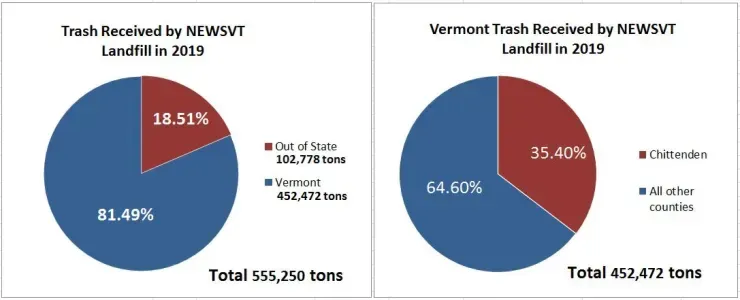WHAT ARE PFAS CHEMICALS?
Is There a "Safe" Level for PFAS?
What are PFAS chemicals and why are they harmful?
Per- and polyfluoroalkyl substances (PFAS) are a group of man-made chemicals. According to the U.S. Environmental Protection Agency (EPA), PFOA and PFOS, the most studied of these chemicals, don’t break down in the human body or the environment. These chemicals can be absorbed and accumulated in the body, and remain for long periods of time. And with continued exposure, these chemicals will build up over time causing various health problems, including birth and development abnormalities, and kidney and testicular cancer, to name a few.
What products that end up as trash contain PFAS?
A partial list below:
– Non-stick cookware (Teflon, SilverStone, more)
– Rain repellent clothing (GORE-TEX is one example)
– Soil resistant carpet and furniture (Stainmaster, Scotchgard, more)
– Mattresses
– Food Packaging (Fast food paper wrappings, pizza box liners, and more)
Is the State of Vermont doing enough to protect our rivers and lakes from harmful effects of toxic chemicals?
While there is currently a Vermont State standard for “safe” levels of PFAS for drinking water, there is no standard for ambient, or surface water. In February of 2020, the Agency of Natural Resources posted a proposal for developing a standard for a “safe” level of PFAS in our lakes and rivers.
Act 21, (S.49) passed in 2019 by our State Legislature, requires that a standard is adopted by January, 2024. Through mediation, DUMP was able to stop disposal of the Coventry landfill leachate at the Newport Wastewater Treatment facility until the standard is adopted and the water discharged from the facility complies with the standard. Read the state’s proposed plan to develop a standard, and our comments below.
How much waste is dumped in Coventry annually?
–> In 2019 555,250 TONS of waste were received at the landfill in Coventry.
–> Out of State waste accounts for nearly 1 out of every 5 tons.
–> Chittenden County produces
more than one third of Vermont’s waste.

Data compiled from quarterly reports produced by NEWSVT to comply with Condition 78 of landfill permit